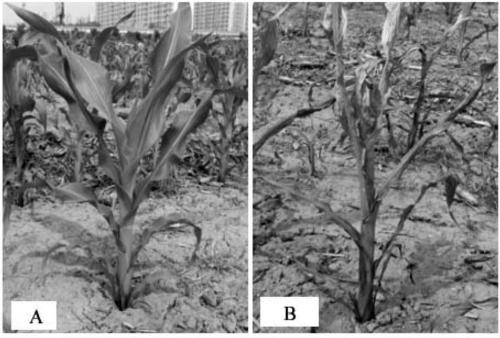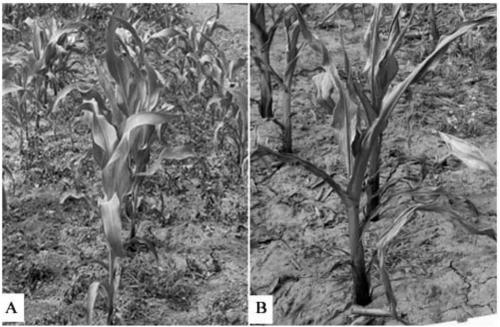Insect and herbicide resistant maize transformation event
A technology for transforming events and corn, applied in the field of plant biology, can solve the problems of not being able to directly use the crop growth period, long residual period, and easily affecting the normal growth of the next crop.
- Summary
- Abstract
- Description
- Claims
- Application Information
AI Technical Summary
Problems solved by technology
Method used
Image
Examples
Embodiment 1
[0106] Embodiment 1 vector construction
[0107] 1. Synthesis of insect resistance genes
[0108] The insect-resistant gene cry1Ab / cry1Ac ZM that is expressed in plants and produces insect-resistant effects disclosed by the applicant in PCT international application WO2017012577A1 is used. The gene is based on the fused and transformed N-terminal 608 amino acid sequences of Cry1Ab and Cry1Ac, uses plant-favored codons to replace the coding sequence, and replaces the rich genes in the DNA sequence that cause plant transcription instability. Containing AT sequences and commonly used restriction enzyme sites for correction and elimination. At the same time, a 67-nucleotide Ωsequence and a 3-nucleotide (ACC) Kozaksequence were added at the 5' end to enhance the translation efficiency of eukaryotic genes. A 135bp polyA sequence was added to the 3' end. The protein encoded by this gene contains three functional segments, in which the two N-terminal functional regions are highly h...
Embodiment 2
[0122]The acquisition of embodiment 2 transgenic corn
[0123] Transgenic maize was obtained using Agrobacterium-mediated genetic transformation method.
[0124] The plasmid DNA of the vector pZHZH35006 was transformed into Agrobacterium EHA105 by electric shock method, and it was identified for later use.
[0125] Transformation is carried out by using the high-efficiency transgenic method of the backbone inbred line of maize disclosed by the applicant in the Chinese invention patent application CN104745622A.
[0126] Specifically, immature embryos with a length of about 1.5 mm were used for transformation after selfing of the maize inbred line Xiang 249. Collect the immature embryos of about 200 ears as a batch, place them in EP tubes, suck out the suspension, add Agrobacterium liquid containing 200 μM acetosyringone, co-cultivate for 5 minutes, and then transfer the immature embryos to the co-culture medium. Incubate in the dark for 3 days. The immature embryos after dar...
Embodiment 3
[0137] Example 3 Resistance identification of transgenic maize
[0138] T 0 The generation plants are selfed, and the resulting seeds are T 1 generation seeds. Will T 1 Generation seeds were sown in greenhouses to obtain T 1 Substitute plants. Repeat the above process until T 4 generation seeds.
[0139] to T 1 to T 3 Transgenic positive detection, herbicide tolerance analysis, insect resistance identification, and agronomic traits analysis were carried out on the generation plants. Select transgene-positive plants from each generation of plants, which have the characteristics of insect resistance, herbicide tolerance, and excellent agronomic performance, and enter the next generation of screening.
[0140] 1. Positive test
[0141] The detection method and steps are the same as described in Example 2.
[0142] 2. Identification of herbicide tolerance traits
[0143] Sow the selfed seeds of the positive plants detected in step 1 in a greenhouse, identify the herbic...
PUM
 Login to View More
Login to View More Abstract
Description
Claims
Application Information
 Login to View More
Login to View More - R&D
- Intellectual Property
- Life Sciences
- Materials
- Tech Scout
- Unparalleled Data Quality
- Higher Quality Content
- 60% Fewer Hallucinations
Browse by: Latest US Patents, China's latest patents, Technical Efficacy Thesaurus, Application Domain, Technology Topic, Popular Technical Reports.
© 2025 PatSnap. All rights reserved.Legal|Privacy policy|Modern Slavery Act Transparency Statement|Sitemap|About US| Contact US: help@patsnap.com



